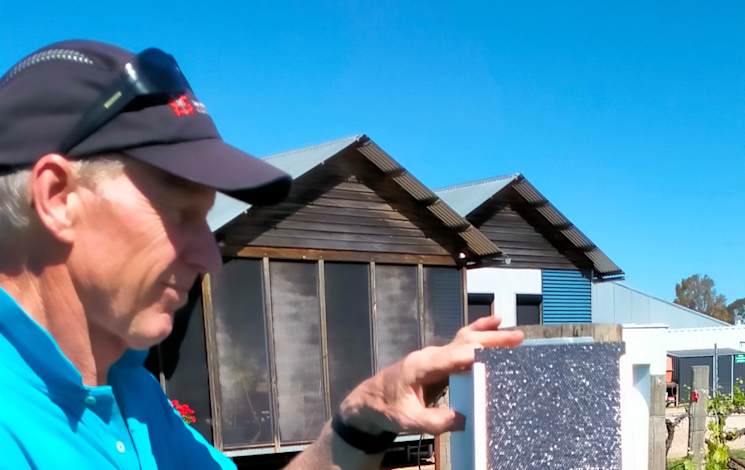A SMOKE sensor developed by La Trobe University researchers in conjunction with local vineyards has the potential to save hundreds of millions of dollars in lost wine production.
The sensor is in the process of being rolled out across the wine industry with monitors now being used to track the impact of bushfires that have ravaged the Grampians this summer.
Wine Industry Smoke Detectors (WISDs) – known as ‘wizards’ – track smoke events like bushfires and burn offs around vineyards.
The data can then advise winegrowers whether smoke is likely to taint their grapes and if they need to discard their season’s harvest or use winemaking techniques to remove the taint.
Data taken during trials of the sensor through the 2020 bushfires that devastated wine regions across Australia’s east coast found that $100-$150 million worth of grapes were needlessly discarded over unfounded concerns they were tainted by smoke.
Latest Stories
Australian agtech provider Goanna Ag has now signed on to commercialise the WISDs over the next two years, during which time the hardware and algorithm will be further validated in real-world fire events and the network of WISDs expanded to other wine regions across Australia.
La Trobe University academic Ian Porter led the WISDs research and the risk model over the last 10 years with cooperation from Lake Nillacootie Estate and Ros Ritchie Wines at Mansfield as field sites.
Professor Porter said trials of their sensor in vineyards across south-eastern Australia had found that smoke tainted wine grapes a lot less than viticulturalists believed, which meant vineyards could avoid significant losses of grapes that winegrowers had previously believed were ruined.
“Growers think that all smoke causes smoke taint, but data collected by our team has for the first time globally linked the amount of fresh smoke needed in vineyards to smoke taint in the bottle," Prof Porter said.
“This sensor has the potential to save a heap of grapes they would usually throw away, which can be financially and emotionally devastating for winegrowers, and it’s one of the reasons we developed the WISDs.
"This has been the Holy Grail of research that’s now being solved."
The prototype smoke loggers have been developed by La Trobe University researchers and supported with funding from Wine Australia, La Trobe University, and other partners, including the Victorian and Australian governments and regional wine associations.
A network of 100 prototype loggers was deployed in vineyards in North East Victoria after the catastrophic bushfires in 2020, with the technology refined in the years that followed.
Operating like the networks that continuously monitor air quality for human health, the data loggers calculate risk ratings for smoke taint drawn from a vast database of smoke, grapes, and wine data collected by La Trobe during more than 70 controlled burns and eight major bushfires.
This knowledge links smoke dose to smoke composition, phenol levels in grapes and wine, and their sensory outcomes in wines.
It also includes burn conditions, distance from the burn, grapevine variety, and the timing of exposure during the season.
Prof Porter said the findings also showed that in the majority of cases, winegrowers need not be concerned that smoke from planned controlled burns might taint their grapes.
“The WISD is an amazing breakthrough for Australian growers and wine producers. It provides the sector with an extremely valuable tool to use during any smoke event to determine whether there is a problem or not," he said.
“Having results in real time greatly reduces stress for growers and winemakers and allows them to market their grapes and produce wine with confidence.”















